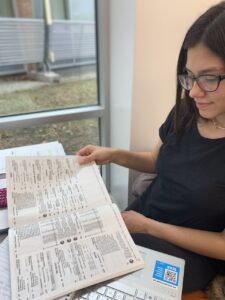Monroe County Community College’s enrollment levels have declined for the Winter 2020 semester.
MCCC reported on enrollment comparisons to the Winter 2019 semester, Winter 2020’s headcount has declined by 13.7% (394 students) and change in credit hours by 13.8% (3,116 credit hours).
MCCC is not alone in this decline. Community colleges across the state of Michigan have also experienced a decline in enrollment.
Community colleges including Washtenaw, Schoolcraft and Grand Rapids have also seen their numbers drop.
There are many factors that contribute to declining enrollment. One of those factors is a smaller number of college-age students.
At MCCC’s Board of Trustees meeting Jan. 27, Director of Admissions Ryan Rafko explained the effects of population decrease on enrollment.
“Across the state, you have the trend of more competition for less students,” Rafko said. “That pool (of students) is getting smaller, so you’re fighting amongst all the higher ed institutions for those students.”
Graduating class size, due to population decline, is projected to decrease until at least 2028, Rafko said.

Another factor of declined enrollment is the number of dual-enrolled students at MCCC.
Lori Jo Couch, professor of English said dual-enrolled students only taking one or two college classes per semester contributes to a decline in enrollment.
“Students are taking classes while they’re in high school,” Couch said. “If they never attend for a two-year degree and go straight to a university, that can affect enrollment.”
A decline in enrollment isn’t all bad news. Coach said smaller class sizes due to a drop in enrollment create a low student-to-teacher ratio.
According to Couch, this can positively impact students.
“Students are better off in a course with one instructor and 15 students versus one instructor and 30 students,” Couch said. “So that can have a positive effect on students.”
Professor Mark Bergmooser said the increase in time a teacher can spend with students due to a low student-to-teacher ratio helps students get the most out of the class.
“I always appreciated that the longer I was in college,” Bergmooser said. “I loved smaller classes. The more time (the professor) could devote to me, I felt like I could learn more.”
The state of the economy may directly affect the number of students who enroll in college as well.
Bergmooser said he remembers the enrollment rates increase following the 2008 recession. Unemployment was high, so many adults returned to college to further their education.
“I had a lot of students my age in my morning classes,” Bergmooser remembers.
Couch remembers that classes were full because of the rise in enrollment.
“Our numbers were very high because people couldn’t get full-time jobs,” Couch said.
In order to maintain enrollment rates for future semesters, Rafko stressed the importance of strengthening relationships with the Intermediate School District and local high schools.
Bergmooser also highlighted the importance of retaining current students.
“What do we do to maintain?” Bergmooser said. “It’s great to get new students, but I’d rather keep the ones I have.”
According to Bergmooser, it is important to adapt properly when faced with a drop in enrollment.
“The challenge we always face is being a great institution in the changing times,” Bergmooser said. “It’s all how you adapt.”

